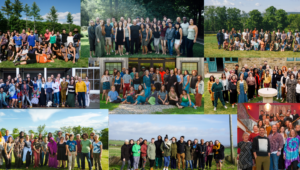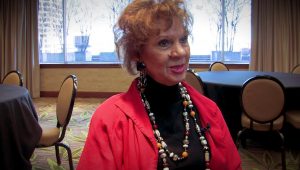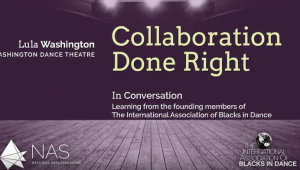This whole conversation began as a means to talk about creative placemaking. What is it? What is its role and why should we care? We’ve spent the last few weeks hearing from our Creative Community Fellows and you. Today we want to wrap up the discussion by tackling the biggest question: what is creative placemaking?
Amanda Thompson notes that the term creative placemaking acts as an inclusive phrase for a range of arts and culture activities that benefit communities:
“Creative placemaking is a nice catch-all phrase that allows artists, elected officials and residents to ask for and create a broad range of physical improvements to a space, or participate in creative activities that make their community a more vibrant place to live.”
Read Amanda’s entire conversation with Casey Caldwell.
Scott Burkholder recognizes that creative placemaking is all about increasing the value of a place as well as increasing the economic impact:
“Creative placemaking is a process of utilizing creative practice and tools to facilitate ownership of a place. It is very valuable as ownership, or sense of responsibility, inevitably increases the value placed on an object/place. When we value our place we desire for it to be the best that it can be on an aesthetic level all the way down to the philosophical level. Creative placemaking increases value, in many senses of the word, of the spaces we share. That increase in value can be extracted by a number of parties, good and bad. Developers reap the value in the form of new real estate opportunities, governments in the form of new tax bases, communities in the form of desirable places to live, work and play. Creative placemaking benefits a whole lot of people and therefore is something people are very interested in talking about.”
Read Scott’s entire conversation with Ali Fadlallah.
Abdul Karim Hakib shares the notion that, at its essence, the economic value is pertinent when talking about this term, but it’s really about increasing the value of a community overall:
“I think people are talking about creative placemaking because it helps change both the physical and social character of a community. It functions as a rejuvenator and changes the circumstance of the people and structures that have been abandoned. It helps create income for people and helps them see things from a bright perspective because in the end it improves their lives economically too.”
Read Abdul Karim’s entire response.
While many recognize the importance of creative placemaking, they are also skeptical, not completely in favor of and hesitant to relate completely to this term. It is also seen as a term that is highly related to funders and corporate projects. Rachel Reynolds Luster explains her reluctance:
“I think the term creative placemaking, in practice, seems to be the newest catch phrase used mainly in funding circles. There have been many cultural projects under the guise of Creative Economy, Cultural Tourism, etc. that have been carried out over the years. I understand why many feel that monetizing the value of arts and artists offers validity to their importance in community life and our national fabric. It also offers a tidy way to quantify and qualify projects in the granting process. I am also of the opinion that doing so de-values artistic and cultural endeavors. There are so many intrinsic qualities to art and culture that are simply unquantifiable and that have value beyond revenue. I feel the fatal flaw in these structures are that they focus on bringing outsiders in rather than strengthening cultural practice from within communities for their own benefit and they treat culture as just another consumable product to be sold. In some ways it validates the importance of art and culture, but in so many other ways it does not.”
Read Rachel’s entire conversation with Laurelin Kruse.
Monica Montgomery and Kristina Newman-Scott also discuss how this term often relates to the corporate bottom line and that as a practice, this work has been happening for centuries:
“Creative placemaking has become so commoditized as a mode of influence, securing the backing of major foundations and corporations that have millions and millions of dollars to invest in it, because they’ve recognized (like we have) that it’s all about coming together to create destinations, to create places in our community where culture and quality of life flourish. Of late everyone wants to infuse arts and culture into everything, because it seems the politically correct thing to do. Ultimately that’s good for corporates bottom line and by default it becomes a triple bottom line for the community. In a strange way, it works for the very people that used to be disenfranchised. Now the starving artist, the Title 1 school, the youth dance troupe or local arts non-profit can be paid and praised for their works, and invited for residencies, artist talks, teaching workshops and receive international acclaim from the communities they are from and that they serve.
As creative place makers we take a curatorial approach to activate spaces. Trying to inspire and energize people in the community. Lending support to activities and projects that wouldn’t happen without our presence and input. Our presence is a present. Creative placemaking now represents a large span of activities, it is a set of actions, an intentionality, a strategy, an event series, a commissioned piece, a cultural tourism buzzword, a feeling you get when surrounded by artistry, culture, innovation and wonder. It’s zen for the disenchanted who need a dose of flavor to shake up their day, an Rx of variety as prescribed by the artist to the masses and multitudes.
The genesis of creative placemaking is old as time. Cave drawings, pyramids, Stonehenge, hanging gardens, coliseums, bustling marketplaces, temples and hallowed halls, all endeavoring to capture and curate the beauty and vibrancy of a place, a kingdom, an ethnic group, highlighting its uniqueness, and giving it the stamp of approval – making it an eternally awesome place, that stands the test of time. The wonders of the world were the original place makers. Our test as cultural entrepreneurs, is to see if our own individual or organizational place making efforts are tried and true enough to last and linger as places of divine inspiration, personal reflection, natural beauty and creative aesthetic, that future generations can enjoy, interpret and add value to. May the odds ever be in our favor!”
Read Monica and Kristina’s entire conversation.
Heather Zinger notes that creative placemaking is so popular now because of the advent of technology, which has created a need to respond to this by creating space for more personal, social interaction:
“The advent of technology that now permeates and mediates so much of our lives is creating a lot of physical isolation. It’s also impacted spaces that were deemed as both public and social. Here in the States, most people are encouraged to have their own car, their own house, their own shed of tools, a lawnmower, etc. There are less daily moments to connect outside of work, to collectively share, to collaborate, to participate…
I think there’s a need to re-activate and re-engage public spaces to address these larger social needs. Studies have shown that being social is pertinent to good health. I was reading about Duke University’s healing arts program and as soon as patients had their own rooms with TVs they were less interested in going to public spaces in the hospitals to watch performances.
The challenges with “creative placemaking” are similar to the word “community.” Who are we re-imagining these spaces for? These re-imagined spaces would serve what habits? What behaviors? What interests? Does everyone have a voice at the table?”
Read all of Heather’s conversation with Elise Pepple.
Nicolle Bennett shares a similar view:
“I think people are longing for a sense of community and connection, and where else can you find that but in creative placemaking? Over time, we as a society have shifted from an experiential to an informational culture, and are now heading back to a longing for connection and community; whether through the “sharing movement,” the evolution of the Internet from a network to connections on a more local and human scale, or our focus on relationships, people are finding new ways of sharing and creating more purpose and meaning for ourselves and each other. Placemaking, in my view, is a participatory action that needs to occur on all fronts; and can be more collectively empowering when it is focused on process. I see it less as making a separate place for creativity to take place and more as creating space for creativity in social life, along with exchanges of new meanings that can catalyze change.”
Read all of Nicolle’s conversation with Sifiso Maposa.
Sara Greer also notes that it is about the human desire to have a space:
“We want a place, a destination, not just a space to put things or humans. From transportation and urban planning to personal living places, gardens, schools, people are realizing they have more power to influence their spaces than previously understood.”
Read all of Sara’s conversation with Valerie Liais.
One of the most telling discoveries from these conversations was that many of the Fellows had never heard of this term before or felt they were not entirely included within the span of this field. Heidi Wright was previously unaware of this term, but through her discussion with Fellow Jessica Moore, found that the work she and Tetra String Quartet are doing does fall into this threshold:
“Before joining this amazing community of artists we were not familiar with the term creative placemaking. Talking with Jessica really helped us define it and realize that it is definitely relevant to what we want to do with music. Just like artists are bringing color and life into empty spaces we want to bring our musical performances and ideas into a prison. Jessica also introduced the term creative placekeeping which made us realize the importance of building up from the existing community we want to reach. The more questions we ask, the more we know, the better we can serve.”
Read all of Heidi and Jessica’s conversation.
Neither Justina Crawford-Williams nor Christina Oi Ying Nip were familiar with the term either. However, they too discovered that the work they are doing in their communities falls into this sector:
“Before entering into this two week long discussion, meditation, and conversation about our work, our communities, and our projects, neither Justina nor I have heard of “Creative Placemaking”. However, when we researched the topic, we realized that many of the ideas behind creative placemaking can already be found in our own work and what fuels our own passion to seek creative answers to the problems we see in our own communities. It has been extremely rewarding and inspiring to be able to discuss the driving force of our work, and the source of our passion. And through our interaction, we have noticed more commonalities than differences, more shared themes and common threads than differences in our motivations and our approaches.”
Read all of Justina and Christina’s conversation.
In their conversation, Emilia White and Josh Rice are also quite unfamiliar and uncertain about the term. They ask each other: are people talking about it so much? They both feel a bit removed from this field and are so thrilled to be welcomed into a community where they can share their questions and ideas with those creating similar work:
[soundcloud url=”https://api.soundcloud.com/tracks/160096237″ params=”color=ff5500&auto_play=false&hide_related=false&show_comments=true&show_user=true&show_reposts=false” width=”100%” height=”166″ iframe=”true” /]
Listen to Josh and Emilia’s entire conversation.
Kate Balug comes from an urban planning background and is very familiar with the term and talk around creative placemaking, while Tanya Daud has never heard of the term and looked it up just prior to this conversation. Kate is skeptical about the term and sees creative placemaking as a problematic and convenient term to “get artists to do the work that cities used to do.” She also shares the similar notion of other Fellows, that this term is highly tied to economic development. The two engaged in a dialogue that allowed for learning but also challenged both of their opinions and views on the topic:
[soundcloud url=”https://api.soundcloud.com/tracks/160096419″ params=”color=ff5500&auto_play=false&hide_related=false&show_comments=true&show_user=true&show_reposts=false” width=”100%” height=”166″ iframe=”true” /]
Listen to Kate and Tanya’s entire conversation.
Why do so many of the individuals doing this work feel removed from this term? Why are so many of them unfamiliar with this concept or skeptical about its intent? Why is this their first introduction to others doing this similar work? And finally, just what is creative placemaking, really? Is it about economic impact or is truly about building a community or effecting community-wide change? Is this a term synonymous with funding? We want to continue this dialogue, tell us what you think.


